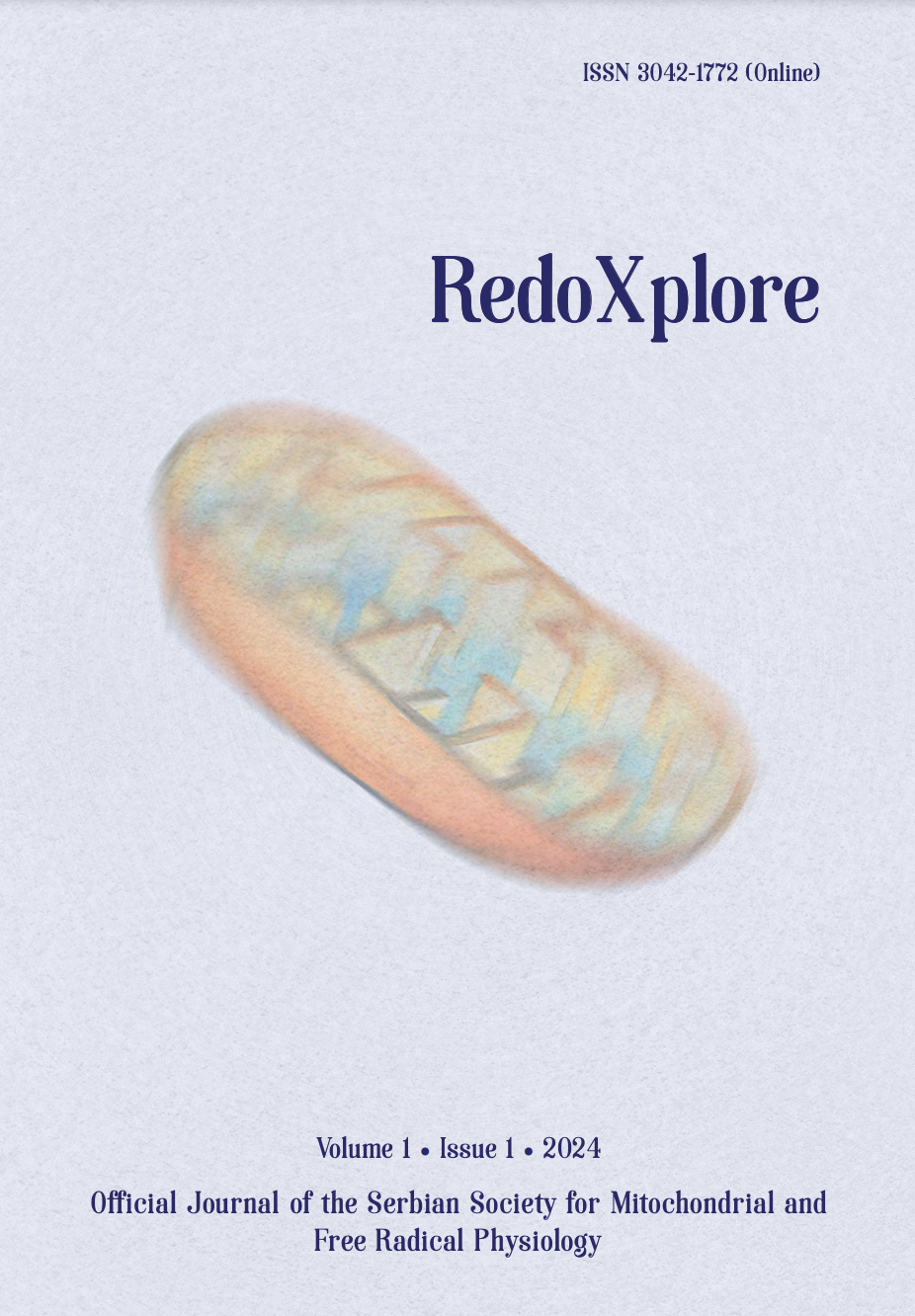
More articles from Volume 1, Issue 1, 2024
REDOX AND METABOLIC REPROGRAMMING OF BREAST CANCER CELLS AND ASSOCIATED ADIPOSE TISSUE - THE CORNERSTONES OF ADAPTIVE TUMOUR BEHAVIOUR
INSULIN MODULATES MITOCHONDRIAL STRUCTURAL AND FUNCTIONAL MOSAICISM IN BROWN ADIPOCYTES
NITRITE MITIGATES OXIDATIVE BURST IN ISCHEMIA/REPERFUSION IN BRAIN SLICES
NITRIC OXIDE, SUPEROXIDE AND PEROXYNITRITE – REDOX REGULATION OF THE CARDIOVASCULAR SYSTEM BY NITRO-OXIDATIVE STRESS AND S-NITROS(YL)ATION
DIETARY NITRATE AS PIVOT ON THE GUT MICROBIOTA-HOST REDOX COMMUNICATION
FRIEND OR FOE: ASSOCIATION OF URIC ACID WITH OXIDATIVE STRESS IN CANINE HYPERADRENOCORTICISM
Department of Equine, Small Аnimal, Poultry and Wild Animal Diseases, Faculty of Veterinary Medicine, University of Belgrade , Belgrade , Serbia
Department of Pathophysiology, Faculty of Veterinary Medicine, University of Belgrade , Belgrade , Serbia
Department of Equine, Small Аnimal, Poultry and Wild Animal Diseases, Faculty of Veterinary , University of Belgrade , Belgrade , Serbia
Department for Immunochemistry and Glycobiology, Institute for the Application of Nuclear Energy, University of Belgrade , Belgrade , Serbia
Department of Pathophysiology, Faculty of Veterinary Medicine, University of Belgrade , Belgrade , Serbia
Department of Pathophysiology, Faculty of Veterinary Medicine, University of Belgrade , Belgrade , Serbia
Department of Pathophysiology, Faculty of Veterinary Medicine, University of Belgrade , Belgrade , Serbia
Editor: Bato Korac
Published: 29.08.2024.
Selected oral presentations
Volume 1, Issue 1 (2024)
Abstract
Canine hyperadrenocorticism (HAC) or Cushing’s syndrome is a multisystemic clinical condition caused by chronic exposure to elevated concentrations of glucocorticoids. It has been considered that oxidative stress is implicated in pathophysiology of HAC. The exact impact of uric acid (UA) on oxidative stress in hyperadrenocorticism remains unclear, given its ability to act as both an antioxidant and a pro-oxidant. In addition, increased UA levels are related to the development of hypertension, dyslipidemia, and type II diabetes in humans with HAC. For this purpose, we aimed to investigate the association of UA with the components of oxidative stress in dogs with HAC. This study included 12 dogs with newly diagnosed HAC and 12 healthy controls. The oxidative stress in serum samples was assessed by advanced oxidation protein product (AOPP) and thiobarbituric acid–reactive substances (TBARS), and antioxidative status by total antioxidant capacity (TAC), reduced glutathione (GSH) and paraoxonase-1 (PON-1). Uric acid was compared between two groups and correlated with oxidative stress parameters. The results showed that dogs with HAC exerted markedly higher level of UA compared to healthy controls (p<0.001). Additionally, higher levels of AOPP and TBARS (p=0.001; p =0.043) were observed in the HAC group, indicating oxidative damage compared to the controls. Among antioxidants, only GSH exhibited a difference between groups (p=0.001). Correlation analysis of UA revealed strong association with TBARS (r=0.615; p=0.037), which implies that UA is linked to an increase of oxidative stress in canine Cushing’s syndrome. The results of this study indicate a possible pro-oxidant role of UA in dogs with HAC.
Citation
Copyright

This work is licensed under a Creative Commons Attribution-NonCommercial-ShareAlike 4.0 International License.
Article metrics
The statements, opinions and data contained in the journal are solely those of the individual authors and contributors and not of the publisher and the editor(s). We stay neutral with regard to jurisdictional claims in published maps and institutional affiliations.






